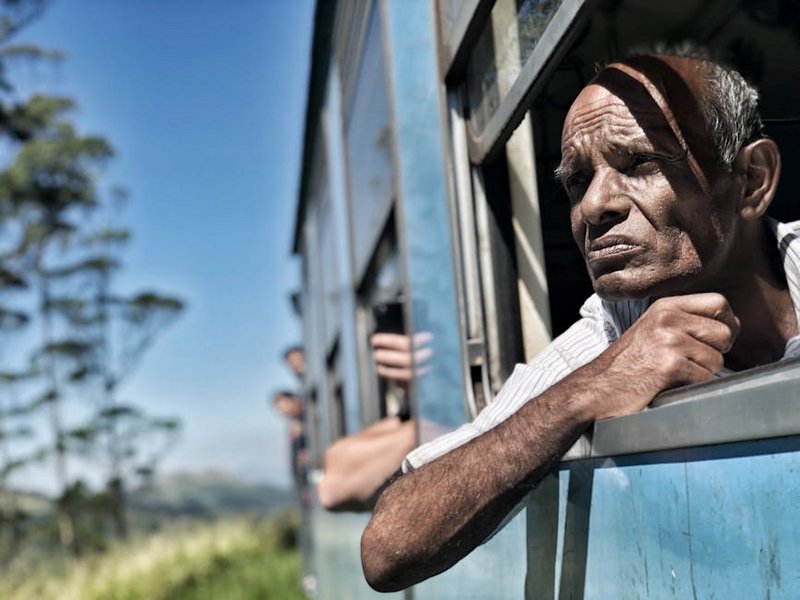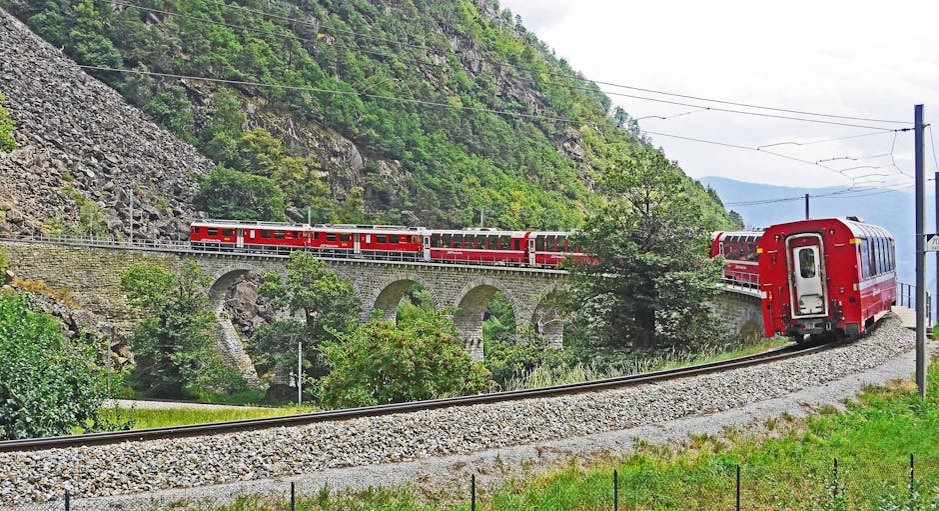World’s Most Beautiful Train Journeys
There’s something magical about train travel that simply can’t be replicated by planes or automobiles. The rhythmic clatter of wheels on tracks, the ever-changing landscapes unfolding outside your window, and the sense of journey rather than destination create an experience that stays with you long after you’ve arrived. The world’s most beautiful train journeys offer more than transportation—they provide moving panoramas of nature’s grandeur, cultural insights, and unforgettable moments of tranquility. From snow-capped mountain ranges to coastal vistas that stretch to the horizon, these rail adventures transform travel into an art form. Whether you’re watching the Swiss Alps pass by or witnessing the raw wilderness of Canada’s Rockies, each journey tells its own unique story through scenery that photographers dream of capturing. The world’s most beautiful train journeys aren’t just about getting somewhere; they’re about the profound experience of watching our planet’s most stunning landscapes unfold at the perfect pace for appreciation and wonder.
World’s Most Beautiful Train Journeys – Essential Information
Before embarking on any of these spectacular rail adventures, understanding the fundamentals will ensure your experience matches your expectations. These journeys vary dramatically in duration, comfort level, and booking requirements. Some routes operate year-round while others are seasonal, and pricing can range from budget-friendly to ultra-luxurious. The best train journeys typically offer large windows, observation cars, and knowledgeable guides who enhance the experience with cultural and geographical context. Many premium services include gourmet dining cars where you can savor local cuisine while watching breathtaking scenery unfold. Advance booking is crucial for popular routes—some trains require reservations months in advance, especially during peak seasons. Whether you’re seeking a multi-day epic adventure or a shorter scenic route, understanding these essentials will help you choose the perfect journey for your travel style and budget.
What Makes a Train Journey Beautiful
- Dramatic natural landscapes that change throughout the journey, from mountains to coastlines
- Unique engineering marvels like bridges, tunnels, and spiral loops that enhance the visual experience
- Cultural immersion opportunities with stops at historic towns and local communities along the route
- Comfortable viewing areas including glass-domed cars, open-air platforms, and large windows
- Seasonal variations that offer different perspectives throughout the year
- Budget options ($50-150 per segment): Basic seating on regular services, self-catered meals, no guided commentary
- Mid-range options ($200-500 per segment): Reserved seating with larger windows, included meals, basic guide service
- Luxury options ($600-2,000+ per segment): Private cabins, gourmet dining, expert guides, excursion stops included
- White Pass & Yukon Route Official Website
- Rick Steves’ Guide to European Rail Travel
- Rocky Mountaineer Official Site
Key Considerations Before Booking
When planning your rail adventure, several factors deserve careful consideration. The time of year dramatically affects what you’ll see—spring might bring wildflowers while winter offers snow-covered landscapes. Your budget will determine comfort level; while luxury trains offer private cabins and fine dining, standard services still provide incredible views at lower cost. Physical mobility matters too—some historic trains have steep steps and narrow corridors. Research the photography opportunities: some routes have better lighting at specific times, and window cleanliness varies between operators. Also consider journey duration; while overnight trips save on accommodation, daylight hours maximize viewing. Finally, check what’s included—meals, excursions, and guide services can significantly enhance value and experience.

World’s Most Beautiful Train Journeys – Planning Your Trip
Strategic planning transforms a beautiful train journey from good to extraordinary. The timing of your trip affects everything from scenery to crowd levels, with each season offering distinct advantages. Budget planning requires understanding the different service levels available—many routes offer multiple classes with varying amenities. Preparation goes beyond booking tickets; you’ll want to pack appropriately for both the climate outside and the environment inside the train. Researching the specific route helps you anticipate highlights and ensure you’re awake or positioned correctly for the most spectacular sections. Consider combining train journeys with other travel experiences for a richer adventure. Whether you’re photographing landscapes or simply absorbing the views, proper planning ensures you make the most of every moment aboard these rolling showcases of natural beauty.
Best Time to Experience These Journeys
Timing your train journey correctly maximizes both comfort and visual rewards. Generally, spring (April-June) and autumn (September-October) offer ideal conditions with mild weather and dramatic seasonal colors. Summer provides long daylight hours but often comes with higher prices and crowds. Winter journeys create magical snowscapes but require preparation for cold conditions and shorter days. Specific routes have unique optimal times: Alaska’s Denali Star shines in September for fall colors, while Switzerland’s Glacier Express is spectacular year-round with each season offering different beauty. monsoon seasons affect tropical routes, while mountain passes may be closed in winter. Research microclimates along your chosen route—some journeys pass through multiple climate zones requiring versatile clothing. Shoulder seasons typically offer the best balance of good weather, manageable crowds, and reasonable pricing.
Budget Planning and Costs
Essential Preparation Checklist
Proper preparation ensures you enjoy every moment of your scenic train journey. Pack layers—trains can vary between warm interiors and cool observation cars. Bring power banks for devices since outlets may be limited, and download offline maps to track your progress. A quality camera with polarized filter reduces window glare, while binoculars enhance distant views. Research the route’s highlights so you don’t miss photographic opportunities. Comfortable shoes allow movement between cars, and motion sickness remedies provide peace of mind on winding routes. Booking adjacent seats on the best viewing side (research this in advance) maximizes scenery enjoyment. Learn basic phrases if traveling internationally, and have local currency for small purchases at station stops. Finally, bring patience and flexibility—weather and mechanical issues can sometimes alter schedules on these complex journeys through challenging terrain.
World’s Most Beautiful Train Journeys – Top Routes and Experiences
The planet offers countless spectacular rail journeys, but certain routes consistently stand out for their extraordinary scenery and unique experiences. These iconic trains traverse diverse landscapes from Arctic wilderness to tropical forests, each offering a distinct perspective on our world’s natural beauty. The Glacier Express in Switzerland delivers eight hours of Alpine perfection, while Canada’s Rocky Mountaineer showcases wildlife-filled valleys and glacier-fed lakes. Australia’s Ghan crosses the entire continent from north to south, revealing the Outback’s raw beauty. Scotland’s West Highland Line feels like traveling through a fantasy novel, with misty lochs and ancient castles. South Africa’s Blue Train combines incredible scenery with ultra-luxury, while Japan’s Seven Stars in Kyushu offers cultural immersion alongside volcanic landscapes. Each journey provides not just transportation but a moving theater of natural wonders that will leave you breathless and inspired.
Must-See Highlights
Certain moments on these journeys deserve special attention for their sheer visual impact. On Alaska’s Coastal Classic, the approach to Seward through Resurrection Bay with glaciers calving into turquoise waters is unforgettable. The Bernina Express’s spiral viaducts in the Swiss Alps create engineering marvels against mountain backdrops. Norway’s Flåm Railway offers breathtaking views of fjords and waterfalls, including the spectacular Kjosfossen waterfall where the train briefly stops. Canada’s Rocky Mountaineer’s passage through Spiral Tunnels demonstrates incredible railway engineering while showcasing mountain scenery. The TranzAlpine in New Zealand crosses dramatic gorges and the Southern Alps’ snow-capped peaks. India’s Darjeeling Himalayan Railway, a UNESCO World Heritage site, offers tea plantation views with Mount Everest visible on clear days. These highlight moments represent pinnacles of scenic rail travel that define why these journeys remain bucket-list experiences for travelers worldwide.
Hidden Gems and Local Favorites
Beyond the famous routes, several lesser-known train journeys offer equally stunning scenery without the crowds. Portugal’s Douro Valley line follows the river through terraced vineyards, offering wine tasting opportunities at stops. Peru’s Ferrocarril Central Andino is the world’s second-highest railway, climbing through 69 bridges and 65 tunnels to breathtaking altitudes. Wales’ Conwy Valley Line might be short but packs coastal views, castles, and mountain scenery into one compact journey. Sri Lanka’s Ella to Kandy route passes tea plantations and misty mountains with opportunities to wave at local children. The White Pass and Yukon Route in Alaska/British Columbia retraces Gold Rush history through rugged wilderness. Argentina’s Train to the Clouds ascends to 4,200 meters through the Andes with spectacular high-altitude vistas. These hidden gems deliver incredible scenery with more authentic local experiences and often lower prices than their famous counterparts.
World’s Most Beautiful Train Journeys – Practical Travel Information
Navigating the practical aspects of scenic train travel requires specific knowledge about accommodations, transportation connections, and onboard amenities. Most beautiful train journeys operate as experiences rather than mere transportation, meaning schedules prioritize daylight viewing over speed. Connections to departure points vary significantly—some journeys begin in major cities while others require travel to remote stations. Accommodation options range from basic seats to luxurious sleeping cabins with en-suite facilities. Dining varies from snack cars to multi-course gourmet experiences featuring regional cuisine. Baggage limitations differ from regular trains since storage space prioritizes passenger comfort over luggage capacity. Understanding these practical considerations ensures smooth travel and allows you to focus entirely on the breathtaking scenery unfolding outside your window throughout your journey.
| Category | Options/Features | Price Range (USD) |
|---|---|---|
| Seating Class | Basic seating, standard windows, snack service | $50-150 per segment |
| Premium Class | Larger windows, included meals, guide commentary | $200-500 per segment |
| Luxury Service | Private cabins, gourmet dining, excursion stops | $600-2,000+ per segment |
| Accommodation | Hotels at stops, overnight trains, combination packages | $150-400 per night |


